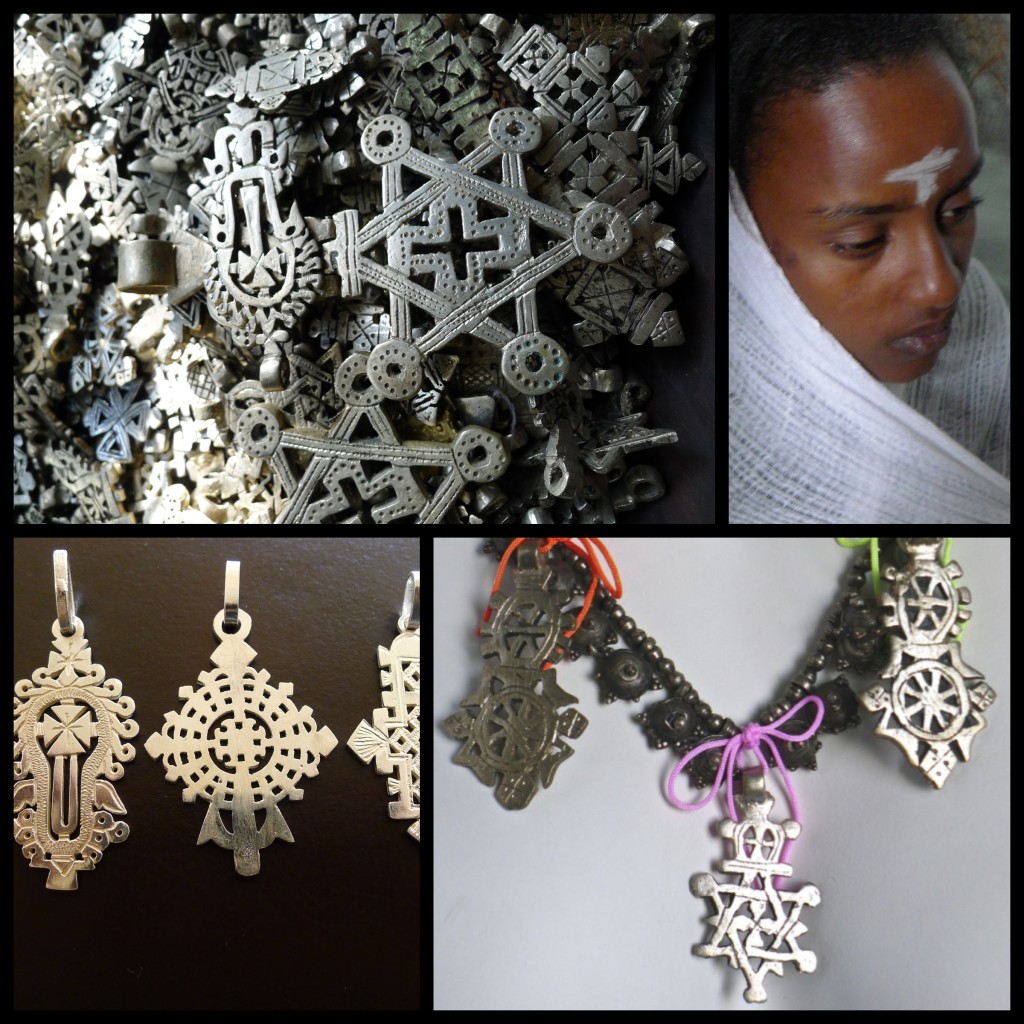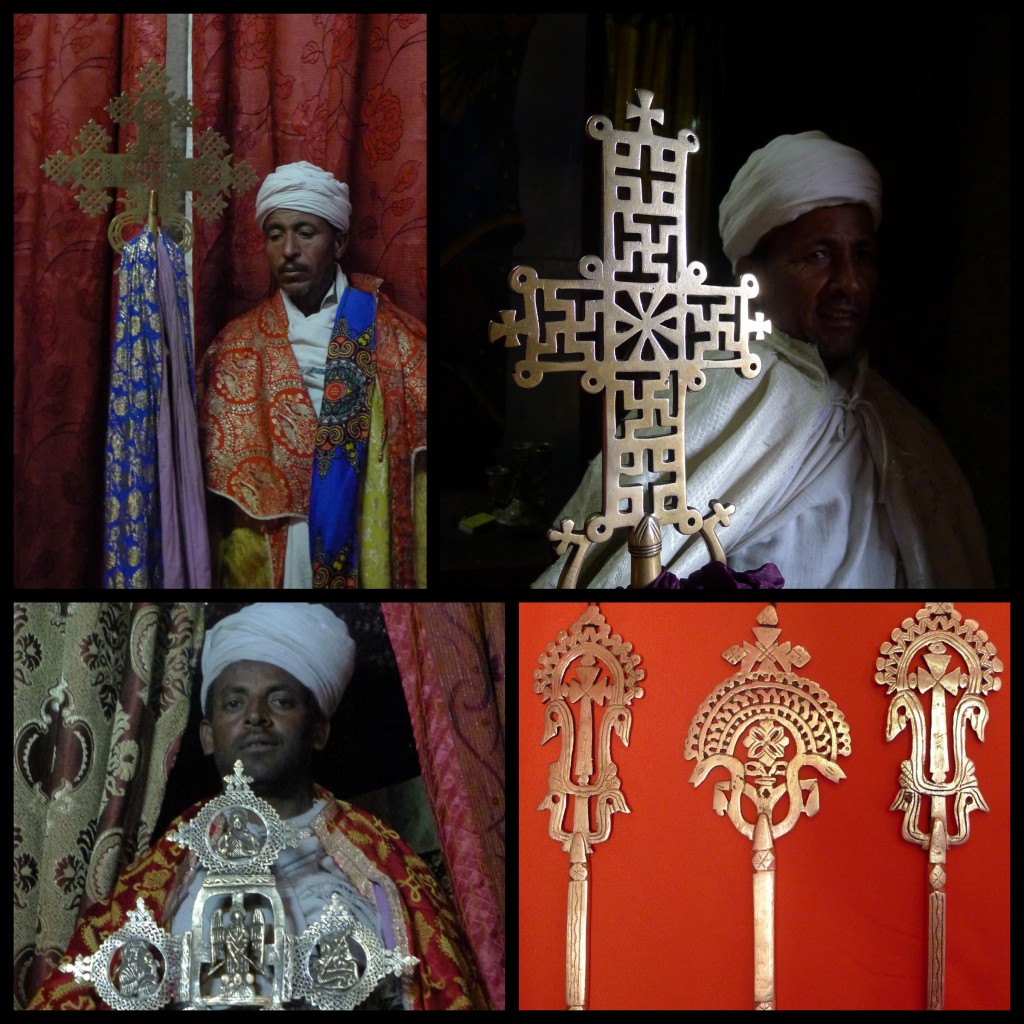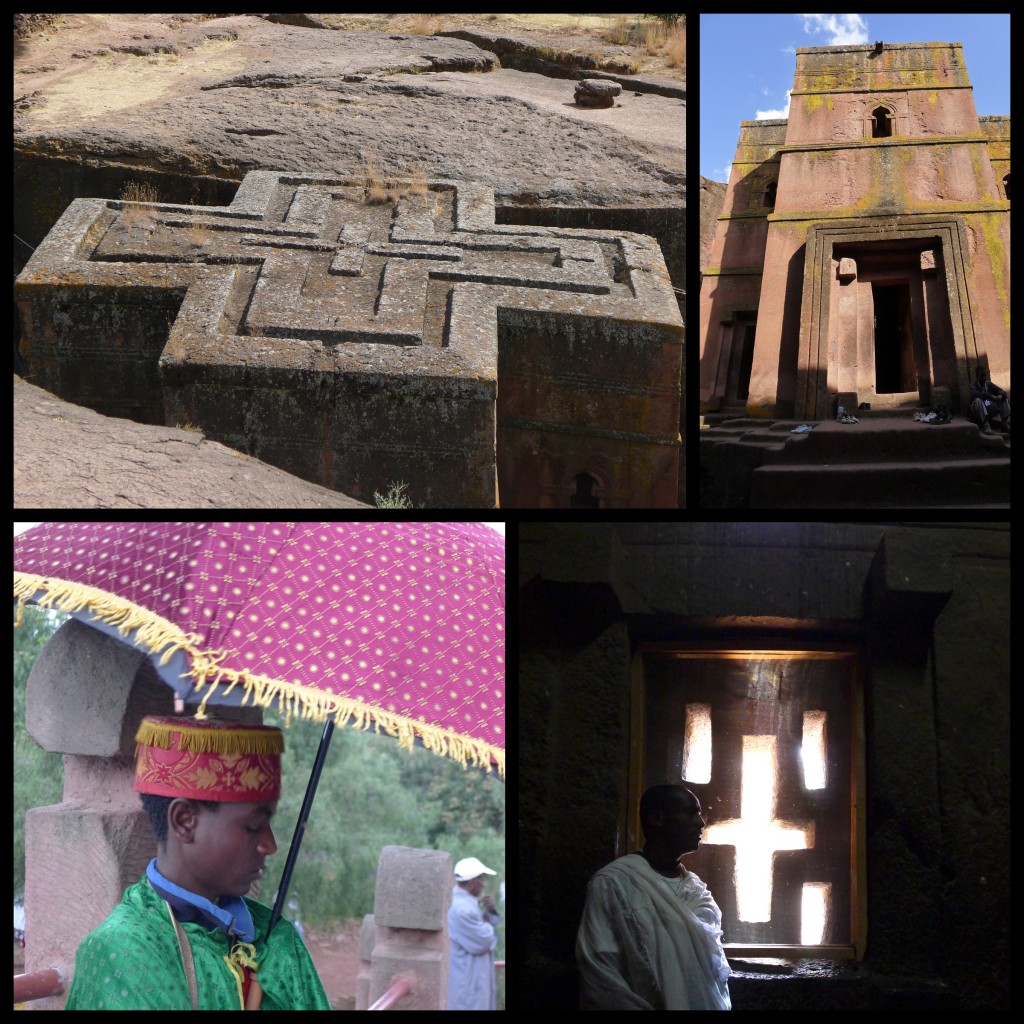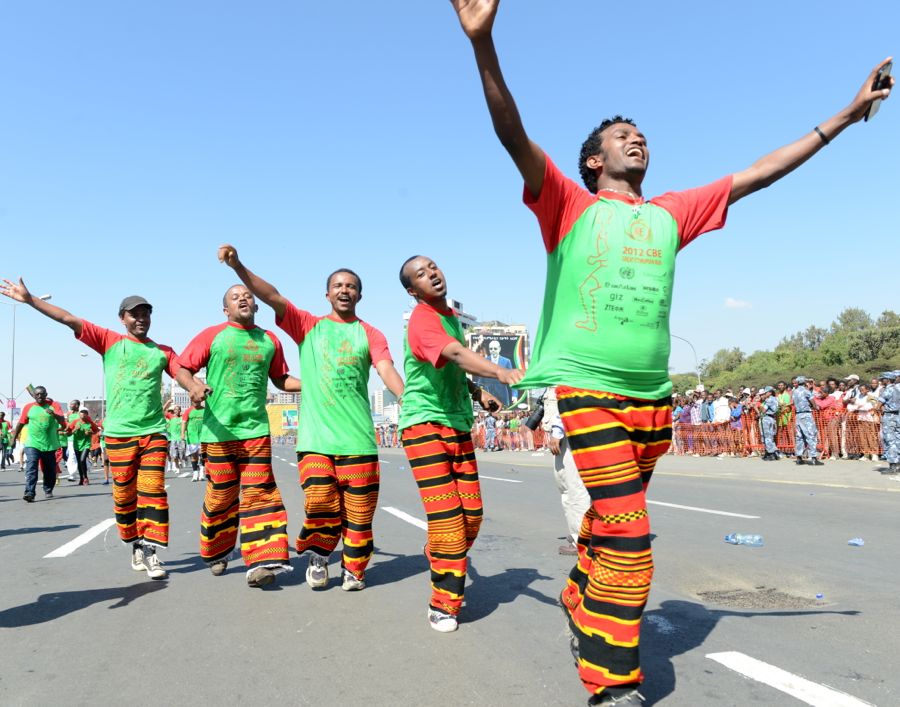You cannot visit Ethiopia without going to Lalibela!
I must admit, when visiting Lalibela, (Ethiopia’s replica of Jerusalem) I felt like I was traveling back in time. The city is of biblical resemblance. Lalibela is the holiest place in Ethiopia. It consists of mainly Ethiopian Orthodox Christians. Everywhere I went, patrons walked the streets, carrying brass and gold crosses. Every church in Lalibela has cross-shaped window upon its stone walls. I noticed both Jewish and Christian symbols in much of the jewelry I discovered too. The Star of David and the Holy Cross are often intertwined— to represent the Bible and the New Testament.
Every piece was breathtakingly intricate. I felt like royalty wearing such works of art.

The necklaces are a mixture of crosses from the three most sacred cities: Axum, Lalibela and Gondor. I added the Star of David and a cross on one of the necklaces I purchased (pictured right). These pieces of jewelry from Lalibela can be found in the FTWWL store.
As I woke early one morning, I realized how being in Lalibela had brought complete peace and tranquility to my travels.
When King Lalibela built the city in the 12th century, he wanted to create a new Jerusalem, where people could be safe to live and worship. Being there, I felt exactly the same way—safe in my surroundings. There is something whimsical about the ancient feel of the city. Hundreds of years ago, monolithic stone-cut churches were excavated within the rocky mountainous terrain. They have become a hugely popular place for many to visit. Every day, more and more people from Ethiopia and around the world, are coming to admire, worship and participate in one of the many church services.

Each cross has a unique design.The Lalibela Cross has special processional importance within the church services.
The Sunday of my visit was St. Gabriel Day. We attend a special service at the Saint Gabriel Church. On my walk there, I was surrounds by hundreds of people dressed in white. They were singing to the beat of the drums coming from within the church. I was trying my best to take in everything I heard and saw. A feeling of astonishment and disbelief formed within me.

Even with so many people gathering at the church, everyone was able to get the priest’s blessing.
Within the stone foundations, I discovered the faith, spirituality and love of Lalibela and the people of Ethiopia.
I spent a lot of time thinking about the history of Lalibela and the importance it has to so many people, including myself. The the strong emotions I had at each holy site was incomparable to anything I have ever felt before. Religious rituals are the center of life in Lalibela. The St. George Church in Lalibela is the most glorified of all. It is one of the eleven monolithic rock-cut churches. I was very pleased to learn that all of the churches are protected by
UNESCO. They are considered
World Heritage Sites which means by law they cannot be destroyed or damaged.
I cannot image anyone who would want to ruin such amazing architecture.

These churches are true works of art and the religious ceremonies were just as astonishing!
Arriving at the St.George service, I realized that I had not gotten there early enough!
The church was already very crowded. As it continued to fill, people began to gather outside. As long as they were close enough to hear the drums, listen to the priest and sing to the music, they were happy, and so was I. Looking over the massive crowd, I was still able to see the priest standing at the front of the church. He was dressed in a robe of many colors. Brightly decorated, he stood elegantly among a sea of white. He was positioned next to a large
cross of Lalibela. It was the most beautiful cross I saw all day! I felt a strong, positive energy around me throughout the entire service.
Because of that day in Lalibela, my trip was truly un-forgettable.

Being in Lalibela, I felt like a part of something greater than myself. I was so happy to be in such an astonishing place.
For me, Lalibela was perfect—it completed my trip to Ethiopia.
I learned how to love the inner beauty of all people and how to recognize good energy and peaceful spirits in every place I go. It was a magical trip, to a place for the Queen of Saba herself, where woman can travel safely and be respected. With all its wonders, Lalibela is a city with distinctly biblical atmosphere, for which I will love and admire for the rest of time.








Recent Comments